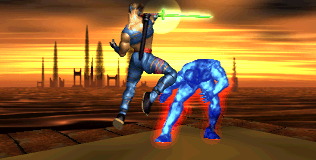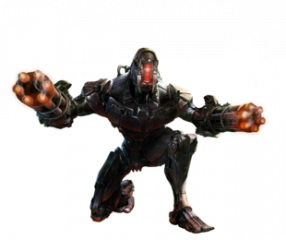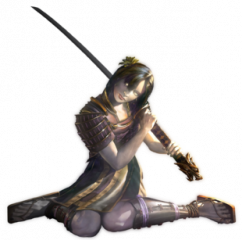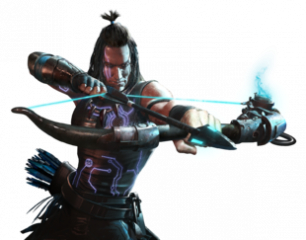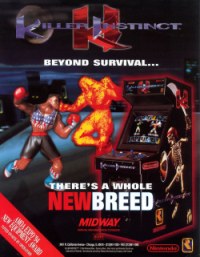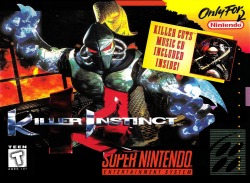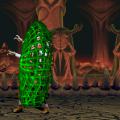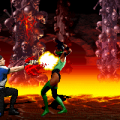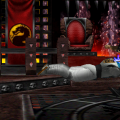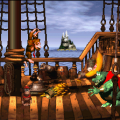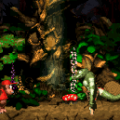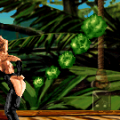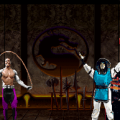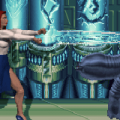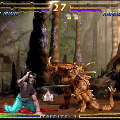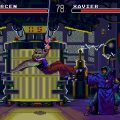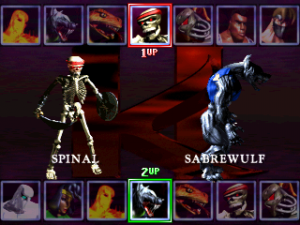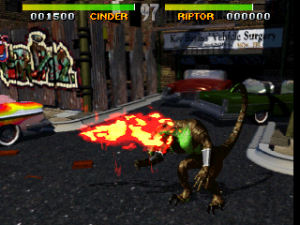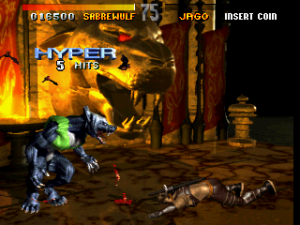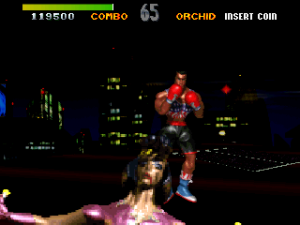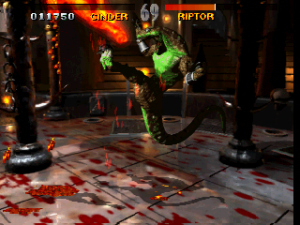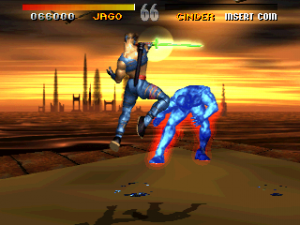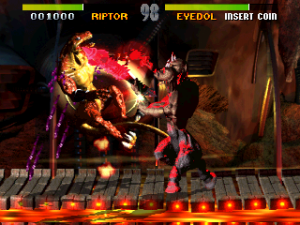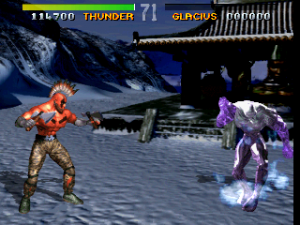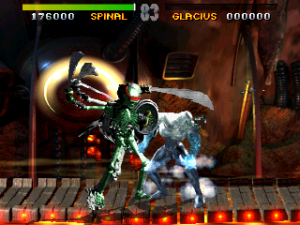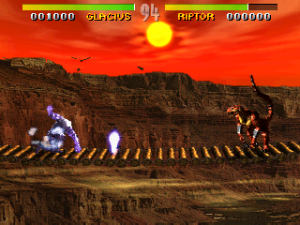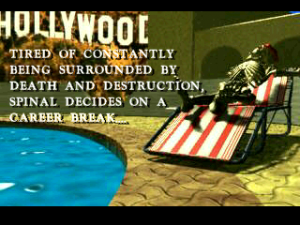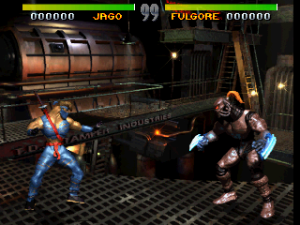1994 was an interesting time for fighting games. Capcom had polished its flagship title, Street Fighter II, to a silver shine with the release of Super Turbo. Not content there, they’d release Children of the Atom, a game that’d create now well-known concepts like air combos and chain combos. Mortal Kombat 2 had received home ports that were selling just as well as they were in American arcades. It was an interesting time, full of both successes and failures in the genre. And so entered Rare, not too long just before they rose to super-stardom with the Donkey Kong Country series. It’s difficult to say if Killer Instinct was directly competing against Mortal Kombat or not, since the cabinets themselves were manufactured by Midway. There’s definitely some similarities between the two series, given the finishing moves and darker atmosphere compared to similar games of the time. Despite this, the series does enough of its own thing that it still feels unique, which made it more of a worthy rival to the MK series than all the other games that tried to copy it. The original games eschew live actors and pixel art in favor of CGI models, with plenty of FMV to draw In crowds. In terms of gameplay, the series takes far more after Japanese fighters of the time, making use of a six button layout, rolling and charged based special moves, and a focus on those newfangled combos that would become a critical gameplay element.
It was also a rather large swerve for its publisher Nintendo, achieving a lot of things that gamers of the time would never dream the big N would do. KI is one of the only traditional fighting games the company published, unless one chooses to count the Famicom’s Joy Mech Fight. Even more surprising is just how gritty this is for a game mid-90s Nintendo chose to put their name on. While it’s certainly not a patch on Mortal Kombat in terms of gore, these are still semi-realistic human beings and undead monsters beating each other up, complete with fatal finishing moves. Still, it most likely didn’t hurt their image, especially given this was when the infamous “PLAY IT LOUD” ad campaign was in full swing.
The original Killer Instinct games were pretty much the perfect time capsule of what was huge in the mid 90s, which might explain why the series flared out so quickly. It wouldn’t be long before CGI technology improved by leaps and bounds, leaving the graphics more dated than traditional pixel art. The gameplay, while far more playable than the worst the decade had to offer, never managed to draw much interest from competitive players, either. A third game that would bring the series to the third dimension was briefly planned, and then cancelled. From there, Rareware would suffer a long and painful decline that’s been far better documented in so many other places.
And so, through KI‘s long absence, the fighting game industry fell into a long hibernation, before emerging into a renaissance with Street Fighter IV. This revival lead to a new era in fighting games where every feature had to be carefully considered and balanced. With tournaments being broadcast across the world, and massive cash prizes on the line, it was only fair enough. With that in mind, the fact that its recent revival ended up so much better than anybody could have expected is more than a little surprising.
Part of the appeal of Killer Instinct is its odd array of characters. Most fighting games of the time stuck to characters that were distinctly human, possibly with some kind of beast man for variety’s sake. While there’s plenty of standard humans across the series, the amount of characters that break from that mold is only eclipsed by games like Darkstalkers and Guilty Gear. There’s a pretty wide variety of pop culture archetypes among the cast that there’s a surprising amount of variety. Some might be more interesting than others, but you’ll probably never find another fighting game series where a skeleton pirate can fight a cyborg dinosaur. While the original games attempt to give some sparse backstories to the cast, the reboot does a far better job at fleshing out their histories, often giving them new backstories entirely.
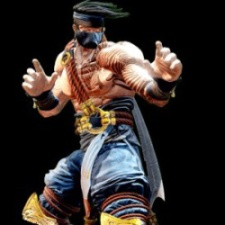
Jago
A Tibetian warrior monk who is directed by an entity known as the Tiger Spirit to seek out and destroy Ultratech. Eventually, it turns out that the Tiger Spirit is actually the interdimensional demon known as Gargos, who possesses Jago to bring about his will. Whoops. Jago is the Ryu-type of the series, easy to pick up and play, but not particularly exciting compared to most of the cast.
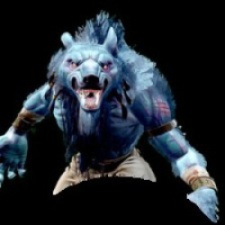
Sabrewulf
A German aristocrat cursed with lycanthrophy, Sabrewulf is part of the original game to find a cure for his condition. Unfortunately, that doesn’t really work out, but at Ultratech gives him cool cyborg arms, for whatever reason. Sabrewulf’s generally the easier characters to play in the series, since he excels in dashing in and mashing buttons to deal out damage. His name is a reference to one of Rare’s earliest games, released during the time of the ZX Spectrum.
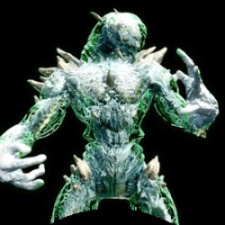
Glacius
Glacius basically started off as being as close to the T-1000 as Rareware could legally get, with the ability to turn his arms into bladed implements and melt into liquid. In the original game, he’s a member of a race of ice-based aliens, captured by Ultratech to fight in their tournament. In KI2, a different member of that race heads to Earth to rescue the original. The reboot, however, has him as an alien police officer, sent to Earth by a decoy distress signal sent by Ultratech in an attempt to get his technology.

Thunder
In the original KI, the character then known as Chief Thunder is the required Native American most 90s fighting games had to have (see: T. Hawk, Nightwolve, etc.) He enters the tournament to avenge the death of his brother, Eagle, who went missing in the previous year’s contest. In the reboot, he’s out to avenge his brother and his parents, who were killed by Ultratech. He’s also got a much better design, given that his previous one was embarrassing even by the standards set by Nightwolf.
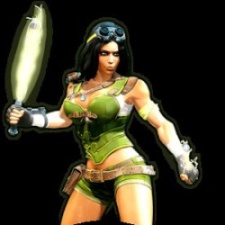
Orchid
A secret agent who’s sent out by the government to discover the truth behind Ultratech and ultimately, bring them down. In the reboot, Ultratech has her burned by her agency, and so she attempts to take them out on her own. She’s eventually assisted in her goal by Jago, who is revealed to be her half-brother. Her design is also thankfully much less embarrassing in the reboot, especially since she doesn’t have a finishing move in which she bares her breasts to the opponent.
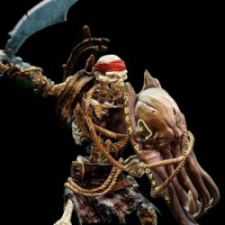
Spinal
Spinal is based on the stop-motion skeletons that Ray Harryhausen was famed forn. In KI1, he’s a skeleton that Ultratech brought back from the dead. In KI2, he’s the same guy, raised from the dead again in the past by Gargos as a minion. In the reboot, he’s the undying corpse of a bandit king, forced into unlife after a failed assassination attempt against the King of Babylon, searching the seas for an artifact that’ll actually kill him. Spinal’s best moves come from earning skulls that he gets by using his shield to absorb special moves.
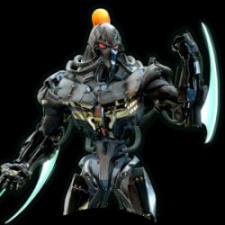
Fulgore
A cybernetic prototype built by Ultratech to replace human soldiers with, Fulgore is originally put through the Killer Instinct tournament as a final test. In the reboot, he’s simply out to kill Ultratech’s foes, but it turns out he’s actually carrying the soul of Thunder’s brother Eagle, slowly overpowering his original programming. While he resembles a cross between the T-800 and the Predator, he plays more like a variant on Jago, with the ability to teleport and shoot lasers out of his eyes.
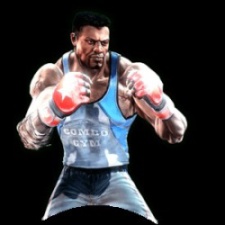
TJ Combo
Originally, TJ started off as a boxer who got banned from the ring for using cybernetic implants. He entered the Killer Instinct tournament because he liked money. In the reboot, he has a similar backstory, but is a bit more heroic, removing his implants in an attempt to take down Ultratech and make an honest comeback. Given that this means now he’s a mostly normal guy who beats up dinosaurs, aliens, the undead, werewolves, evil sorcerers, and a Battletoad, this gives him the biggest stones in the entire cast.

Riptor
In 1994, Jurassic Park was pretty much the coolest thing ever, and that’s more or less why Riptor exists. Riptor is another experiment by Ultratech to combine human and dinosaur DNA into a perfect killing machine. Apparently, that didn’t go very well, since it’s implied she was killed by TJ and thus, didn’t appear in KI2. In the reboot, she’s given a less humanoid appearance and an assortment of new cybernetic upgrades, but still doesn’t generally do much besides serve as one of Ultratech’s mooks.
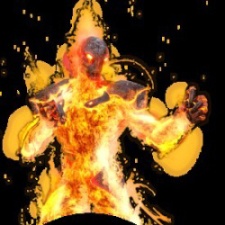
Cinder
In the original games, Ben Ferris was a convicted criminal who was promised his freedom if he won the Killer Instinct tournament. After their experiments turned him into a being of living fire, he’s apparently killed by Glacius, and doesn’t appear in KI2. In the reboot, Ben is a corporate spy who ends up getting caught by Ultratech, deciding to become Aria’s chief enforcer after getting his fire powers. His rebooted playstyle makes him feel a lot like an MK character, with chain combos, enhanceable special moves, and a focus on juggling foes.
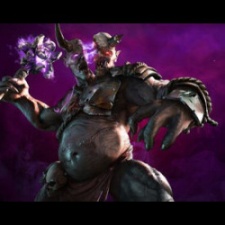
Eyedol
2000 years ago before the events of the first game, Eyedol and his rival Gargos were banished to the realm of Limbo. In the original game, Ultratech releases him from his dimensional prison, after which he apparently does nothing but sit around and wait for people to beat him up. In the reboot, the battle between him and Gargos ended with Eyedol getting his head torn completely in half. Kan-Ra resurrects him, but only enough for one half of his head to be alive at a time. One half is an extremely aggressive rush down type, while the other half specializes in long range magical attacks.

Maya
In the original games, Maya is queen of the ancient land of Amazonia, and one of the heroes who originally banished him to Limbo. After Gargos’s return, Maya sets out to kill him for good. That’s all thrown out for the reboot, where she’s part of a clan of South American monster hunters. After Ultratech leaves her the only survivor of her clan and releases the evil Kan-Ra, she sets off to take her revenge on the corporation, eventually coming to blows with Gargos. Rebooted Maya might be the only fighting game character who has a projectile that gets more dangerous the more it’s blocked.
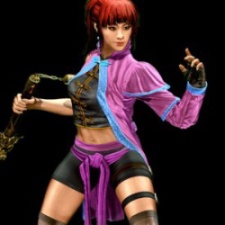
Kim Wu
Original Kim comes from ancient Japan, descendant of the heroes who banished Eyedol and Gargos to Limbo. When Gargos threatens to return, Kim takes up her nunchaku to fight him off. The reboot has her as an Asian-American from San Francisco, having wisely ditched the confusing time travel plot of KI2. She eventually inherits a dragon spirit, who commands her to be the one to eventually defeat Gargos. Which is more than can be said for her unseen brothers, who would apparently rather stream fighting games on Twitch. How very meta.

Tusk
The last of a clan of northern barbarians, Tusk gives up his title of arena champion to face the threat of Gargos. In the reboot, he’s a Viking warrior who’s been wandering the earth for ten thousand years, his memory stolen by Gargos. The reboot makes him more of a homage to Weaponlord, with his ability to deflect his opponent’s attacks with his own moves, as well as being able to leap onto foes sword first.
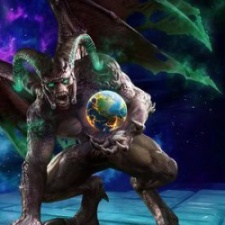
Gargos
In KI2, Gargos was the second of two monstrous warlords who were trapped in Limbo. After the death of Eyedol in KI1, a time warp sent everybody into the past, from which Gargos is supposedly attempting to conquer the world. As far as fighting game bosses go, he’s hardly the most difficult, although his ability to heal himself by laughing at you can prove to be pretty frustrating. In the reboot, Gargos is a godlike tyrant from the dimension known as the Astral Plane, which he’s been using a base for thousands of years to plan his invasion of Earth. He’s also got an insane amount of moves, from quadruple jumps, to the ability to summon minions to fight for him, the ability to steal meter from his opponents, and more. It can get somewhat nuts.
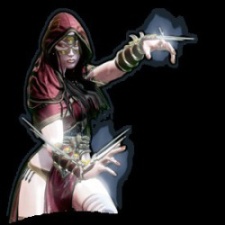
Sadira
An assassin from Thailand, Sadira uses her creepy spider powers to dominate the air and disable her enemies. Recently, she’s been involved with Ultratech, including stealing Glacius’s technology and attacking the corporation’s enemies. As the first new character introduced by the reboot, Sadira’s pretty interesting, being the closest thing the series has to a ninja while still having some pretty unique tricks.
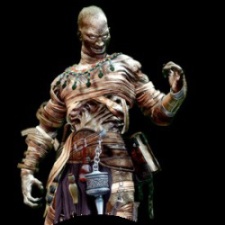
Kan-Ra
A vizier and sorcerer from Babylonian times, Kan-Ra was cursed to rot and exiled after a failed assassination attempt against the ruler of Babylon. Although he kept himself alive through black magic, he was captured and sealed away by Maya’s order of monster hunters, until the day Ultratech’s forces accidentally freed him. Now, he’s searching the modern world in a quest to gather more power, always hounded by Aganos, the war golem sent thousands of years ago to kill him. Any resemblance to the bad guy from Thundercats is likely intentional.
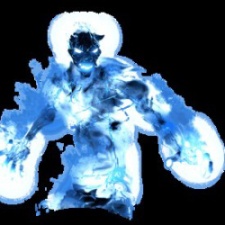
Omen
A demon from the astral plane, Omen serves as the herald of Gargos, and possessed Jago to bring about Gargos’s will on Earth. Jago managed to cast out the corruption, but Omen ended up manifesting as a corporal being, seeking to possess Jago once more. Omen has what might be one of the weirdest projectiles in video game history, in which his projectiles can do one of 11 things chosen at random.
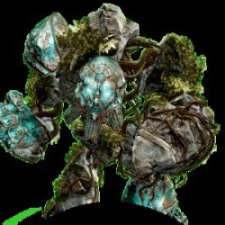
Aganos
Formerly a golem built for warfare, Aganos was given free will by the ruler of Babylon. He’s then sent to find and kill Kan-Ra, a task that Aganos still hasn’t been able to accomplish centuries later. Despite the fact that he’s literally falling apart from age, however, he’s still determined to chase Kan-Ra down. As one of the largest characters in K12013, so large that the camera has to zoom out to fit him, Aganos also has the ability to create walls to trap his opponents, something no other fighting game character’s been seen to do.
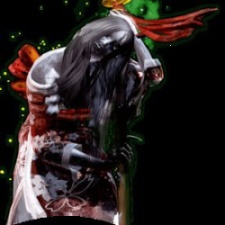
Hisako
Given how much pop culture the original games borrowed from, it’s not much of a surprise to see a murderous Japanese ghost girl make an appearance. A young woman from the Sengoku period who was killed by a band of renegade soldiers, Hisako rested undisturbed for centuries. That is, until Sadira, who apparently never watched any Japanese horror movie, disturbed her grave under orders from Ultratech. This, of course, causes her to rise from her grave in search of vengeance. While she’s somewhat more selective with such than most angry Japanese ghosts, she’s still pretty creepy, especially with how she can swallow people whole to possess them.
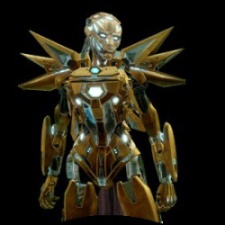
ARIA
ARIA is an advanced artificial intelligence, and the CEO of Ultratech itself. She uses her vast resources to prepare humanity for threats to their future, like the arrival of Gargos. Unfortunately, despite her noble intentions, she’s willing to do all sorts of nasty things to accomplish this. This directly leads to a bunch of people wanting to beat her up and ruin her company. She plays a little like her own Marvel Vs Capcom team, with three different bodies she can switch between during a fight to change up her moves. She might also be the first female AI who’s willing to go out and beat people up herself instead of lazing around in her complex.
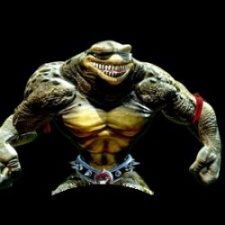
Rash
The first guest introduced by the reboot, Rash serves as the “wacky guy” of the Battletoads team. Formerly a computer programmer, Rash ended up in a virtual reality world that turned him into a toadman in sunglasses. Rash goes on to fight evil through a variety of very difficult games, using his transforming limbs to attack enemies. After reaching the point where he’s sick of speedrunning his own game, Rash enters the KI universe. He’s full of references to his original series, from the way he controls to the fact that his Ultra borrows its rhythm from the original game’s infamous pause theme.
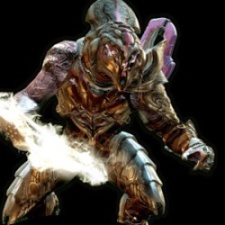
Arbiter
The second guest character to join the KI reboot, Arbiter hails from the Halo series, and is, frankly, a far more interesting choice than Master Chief could hope to be. In the Halo series, Arbiter is a high ranking given to certain members of the Sangheli race, who undertake suicidal missions to regain lost honor. This particular Arbiter is an amalgamation of previous ones, and doesn’t have any particular story or explanation for ending up in the KI universe. In combat, he uses a variety of Halo weapons, including a carbine, plasma grenades, and an energy sword. In a nice touch, playing on a standard XBOX controller means his grenade and gun buttons are mapped the same way they are in Halo 5.

Mira
As Maya’s twin sister, Mira was part of the same order of monster hunters. After she sacrificed herself to save Mira from a pack of vampires, the vampires eventually bring her to unlife. In fine fighting game vampire tradition, Mira can stand in front of the sun all day long with no ill effects, for reasons that are never really explained. Mira’s moves are especially powerful, but almost all of them drain away her health, forcing her to drain her opponent’s blood with a non-damaging grab to restore the health she expends.
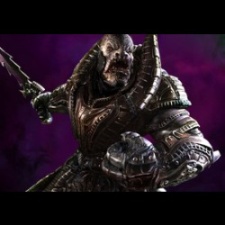
General RAAM
The main antagonist and final boss of the original Gears of War, there’s been little to no attempt to explain his appearance in KI. RAAM is a general of the Locust, a subterranean species bent on wiping out the humans of planet Sera. In KI, he doesn’t even bother with firearms, instead using an absolutely massive knife and a swarm of bat-like creatures known as Kyrll to shield himself and attack opponents. As KI2013‘s purest grappler, most of his combos are very easy to break, but he has grabs that can easily devastate an opponent’s life bar.
Kilgore
Before Ultratech’s deadly Fulgore unit, there was the Kilgore. Prone to malfunction and overheat, ARIA decommissioned the entire line, except for one. After glitching itself into self-awareness, it’s pulled from the scrapheap to fight for Ultratech once more. Kilgore has its own unique set of moves, utilizing its twin chainguns. The more they fire, the more they heat up, and when they reach maximum heat, Kilgore becomes far more dangerous at close range.
Shin Hisako
After the vengeful spirit retrieved her father’s katana, Hisako was freed from the bonds that held to the grave. Calmer and more focused, Hisako now sets her sights upon defeating Gargos. In gameplay, she gives up her powerful countering technique for the ability to create orbs that allow her to quickly teleport around the screen and create projectiles.
Eagle
Previously mentioned as Thunder’s supposedly dead brother, it isn’t until the reboot where he finally makes an appearance. After he was captured by Ultratech, he was used to create their Fulgore combat cyborgs. After being rescued by Glacius, he joins the battle against Gargos, accompanied by his robotic bird companion. He uses the high-tech bow he carries to pelt his foes with arrows, while the bird has several moves of its own that assist him in battle.
Sometime in the far future, massive megacorps rule the world, with UltraTech, being the most powerful of them all. UltraTech has their hands in everything, from genetic engineering, to military robotics, and even interdimensional travel. Their biggest success is Killer Instinct, a worldwide, televised fighting tournament that offers its winners whatever they could desire. For this tournament, ten fighters have gathered. While some are in for the prize, and others hope to take down UltraTech, some of the corporation’s newest creations are entered into the tournament, as well. UltraTech have even brought in their own final boss, an ancient, monstrous warlord from the realm of Limbo named Eyedol. Unfortunately, as interesting as a cyberpunk fighting game sounds, the whole “evil megacorp・angle barely shows through the game, and you can more or less forget they even exist aside from the game’s endings.
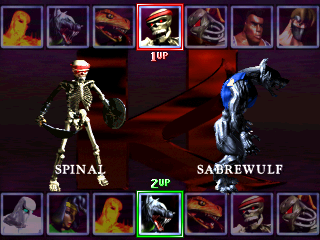
KI actually leans a lot closer to Street Fighter II, in terms of basic gameplay. The controls follow SF’s six button standard, with three buttons each for punches and kicks. Special moves are also generally performed in Street Fighter style, with a lot of quarter circle and half circle motions, although a couple of characters are primarily charge based. Compared to a lot of the weirdness you’d see in Mortal Kombat‘s specials, like freezing people, or projectiles that launch people upwards for juggles, there’s nothing quite that crazy here. Occasionally you’ll find things like teleports, invisibility, or projectile reflectors, but other than that, you’ll find a lot of your standard projectiles and rising uppercuts.

While in other fighting games, combos are an advanced technique that’ll give a player a certain edge, combos are just about mandatory in KI. Unless you’re playing against an incredibly unskilled opponent or on the easiest difficulty levels, there’s simply no chance of winning without them. Killer Instinct eschews the timing based links of Street Fighter and the juggle combos of Mortal Kombat for its own, very complex combo system. If you can’t figure it out, you’re basically going to hit a massive roadblock, because single hits barely do any damage, while combos can quite often chew up half a life bar. The game’s combo theory is some pretty complicated stuff, complete with its own terminology, and it can take a while to come to grips with.
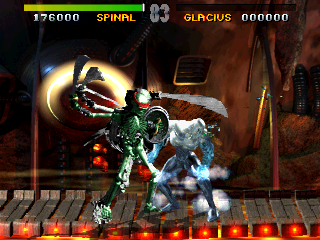
Generally, combos follow a very specific pattern of moves. Openers, like jumping attacks, overhead attacks, and certain special moves start off combos. Your character’s Linker special move extends them, and Linkers are followed with a couple of automatic hits, known as an autodouble. From there, you repeat your linkers and autodoubles, finishing the combo with your characters’ Ender special, which tacks on some extra damage and knocks your opponent skyward. Unfortunately, as odd as the combo system is, it’s also pretty rigid. With a few exceptions, you generally have to stick with that exact sequence every time, lest your combo just stop completely. There’s also a lot of memorization involved, since what buttons you’re allowed to use to finish a combo will change depending on the last move you did, so you’ll likely need a guide to remember what follows next.
If an opponent can notice what move you’re using and perform their anti-air special with the correct button, they can actually break your combo, instantly interrupting it and bringing you into a hard knockdown. There’s no penalty for mistiming a breaker or using the wrong button, so generally, the only thing the offense can do is vary their autodoubles to try and make what buttons they’re using less obvious. Since combos can easily go into the double digits, breaking is a skill you’re going to need against any decent player of the game. The offense has a few tricks he can pull to make their combos harder to break, like being able to speed up their combo, and with some practice, you can even exploit the engine to make some unbreakable combos. The problem is that against skilled players, you’ll eventually reach a point where this becomes necessary, since anything but the shortest, simplest combo will eventually become completely unsafe to use. There are a few other tricks to combat you can use outside of perfecting your combos, at least. After performing a combo breaker, you’ll get the temporary ability to perform shadow moves, as shown by the flashing line at the end of your current health. These are also done by holding a button, doing a motion, and releasing, with the bonus that they’re faster, more damaging, and if used in a combo, more difficult to break. Every character is also capable of quickly transitioning from one special move to another, such as interrupting a dashing punch to go into a low rolling attack. It’s a neat trick, which, if used properly, can make you a lot less predictable in your approach.
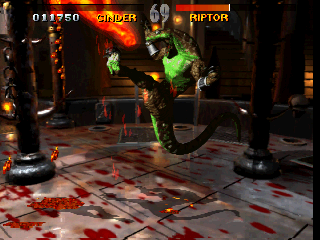
The fact that everybody can keep their opponents on edge and guessing with tricks like this is kind of one of the game’s bigger problems, in that everybody feels kind of similar. Every character’s game plan is basically going to involve getting into the opponent’s face as soon as possible and wailing on them with their best combo. It’s never worth it to try playing defensively, since every character has a move that lets them fly right into your face, ignoring projectiles completely. It’s like playing Street Fighter II, if every character was a variant on Fei Long, a character who’s all about moving in close to the opponent and hitting them a lot. True, one Fei Long can teleport, and one can absorb special moves to use more powerful specials of his own, and one can turn invisible, but you’re still going to notice the similarities. There’s not even a single throw in the game, an apparently deliberate decision due to the designers considering such things “cheap”.
Given the way KI‘s health system works, taking big damage is often far harder to come back from than most other fighters, and matches can end quickly. There are no rounds in KI, and instead, each fighter starts off with a bar of green health. Once the green health has been depleted, there’s a brief pause as they get back up with a bar of red health. It isn’t until that red health is depleted that the losing fighter gets dizzy and set up for finishes, in Mortal Kombat fashion. The tricky part is that the victorious fighter doesn’t actually get a health refill, so they have to deplete that red bar with whatever health they had left. It’s a pretty interesting design decision, preceded by games that’d follow it like Vampire Savior, and it leads to some pretty intense pacing. Taking the lead and keeping up your momentum becomes vastly important, since it’s way harder to make a big comeback once you start losing.
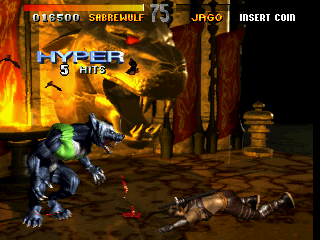
In the tradition Mortal Kombat started, each character gets at least four finishers to end a match with. The most well known by now is the Ultra Combo, a special combo segment that can only be performed when your combo will take out your opponent’s red health. This leads to an extra long, extra stylish series of hits that can easily bring your combo counter into the 30s and beyond, topped off with the now infamous announcement that could be easily be heard across the arcades of old. There are also the Danger Moves, which can be performed while your opponent loses all their red health and is stunned, MK-style, and some of which can be done during a combo that’ll end the match. It’s safer to attempt it as part of what the game refers to as the Ultimate Combo, if a bit more difficult, because if your opponent is good enough at mashing the buttons, they can actually escape the danger state and attempt a comeback with a sliver of life. It’s tough to do, but it’s definitely the sort of thing that may well make people punch you, should you be playing against nearby humans.
The Danger Moves themselves tend to vary in quality, but none of them are remotely as violent as anything you’d see in Mortal Kombat. There’s no dismemberment to be had, and generally the worst thing that happens to an opponent’s body is that they’ll get dissolved into ash. Some of these are decently cool looking, like Spinal summoning a giant, skeletal hand that drags the opponent underground, while others are sadly pretty lame, like Jago stabbing the opponent, who bleeds a little, and then falls over. And then there’s one of Orchid’s finishers, in which she exposes her bare breasts to the opponent, which are capable of causing instant death in a skeleton, a mutant dinosaur, an alien, and a killbot. Let’s see Mai Shirinui pull that off.
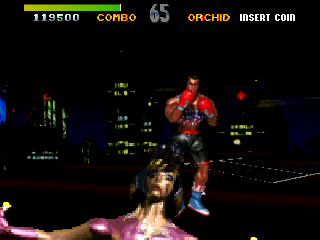
Humiliations are done when the opponent is in the danger state, causing them to break into a silly dance over a funky disco beat. It does not make Fulgore do the Robot, and is thus, worthless to actually use. Finally, by finishing an opponent with a charging or rising special move while you’re in a stage high above the ground, you’ll send them plummeting down to a different fate, depending on the stage. Maddeningly, on the stage set on a bridge suspended over a river of lava, there’s no stage fatality, for reasons nobody will ever figure out.
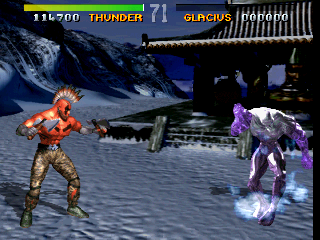
The single player mode starts off simple enough, and the first few fights are pretty mild. The further you get, however, the better the AI gets at showing off their best combos, which typically do 50% or more of your life if you don’t manage to break them in time. Unfortunately, the AI knows how to do its combos at maximum speed, coming out so quickly you’ll hardly even be able to guess which button you need to break. All this comes to a head in the penultimate fight with Fulgore, who can teleport through your attacks, fire triple projectiles that’ll instantly destroy your long range game, knows how to counter pretty much everything you do, and won’t even give you room to get back up when he takes out one of your life bars. It’s never quite as perfect as the worst of Mortal Kombat’s AI routines, but by the end, you’ll find yourself needing several credits to make it through one fight.
And then there’s Eyedol, who doesn’t combo quite as much, but makes up for it with a club uppercut move that knocks you skyward. Every time he hits you with this, or takes out one of your life bars, he’ll begin stomping the ground and healing himself, usually for however much damage you actually managed to inflict on him. At the very least, should you manage to overcome him, Eyedol’s so fancy that he gets two overly dramatic death cutscenes, depending on if you finish him off by knocking him into the lava beneath his stage or not. Most of the endings are pretty standard fighting game fare, although you do get some more of that lovely pre-Pixar CGI to go with them.
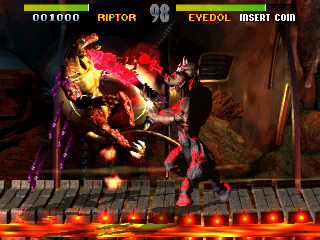
There’s no getting around the fact that the game’s CGI, state of the art for 1994, has now aged about as well as wet cardboard. Still, there’s a lot of technology being used in the game, and the game does its very best to use that massive hard drive for all its worth. There’s plenty of FMV to show off the characters during the attract sequence, as well as when you do particularly well in a fight. Some of the backgrounds are even three-dimensional, and while this doesn’t affect the gameplay, it’s interesting to see the camera rotate around to show it off as you move back and forth. Most of the backgrounds actually tend to look better than the fighters, with the highlight being Thunder’s stage, showing off a massive canyon view beneath a pretty sunset.
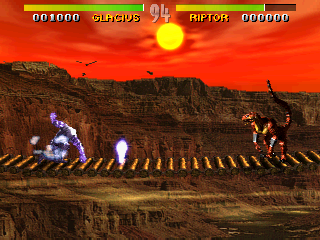
The human characters are plasticine at best and somewhat scary at worst, such as every time Orchid tries to look sexy. The weirder characters tend to look a little less dated, at least, and at least the animations on each character are pretty smooth. At the very least, the game has a very distinct sense of style and flash, which helps to make up for the ugly character models. Characters break into cool, shadowy outlines mid-combo, the camera loves to zoom out to show just how far characters can be sent skyward, and projectiles clash into a cloud of particles. It’s a game that always does its best to look as cool as possible, given how often long, flashy combos tend to happen, and at the very least, the game certainly always looks exciting.

The sound design certainly helps, and the game probably wouldn’t be nearly as well remembered if it weren’t for its infamous announcer. He’s always there, announcing every single combo that plays out with progressively more excited rankings, topped off with a full-voiced yell for Ultra Combos that’ll be heard even above the din of your average arcade. There’s a pretty nice soundtrack, as well, which is varied as the rest of the cast themselves. Orchid gets a funky techno song complete with vocals, while Sabrewulf gets a slower, more orchestral theme. It’s a little tough to hear over the sounds of punching and grunting, but most of the tracks hold up pretty well listening to them on their own.
The Super Nintendo version of the game is accurate in terms of gameplay, although a lot of compromises have been made to fit it on a cartridge. All the FMV has been replaced with still images, a lot of animation frames have been cut, and most of the voice clips have been removed or shortened. The biggest casualty of this is the announcer’s cry of “ULTRA COMBO!”, which has been shortened to just the first word. The Practice mode, where you can beat eternally on an unmoving Fulgore, helps make up for this. It’s a pretty no-frills training mode, but for 1995, having a mode like this at all was pretty groundbreaking, and it’s pretty helpful for coming to grips with the combo system. New copies of the game also included an audio CD called “Killer Cuts”, which include remixes of the game’s soundtrack, which makes for a pretty sweet bonus.
The Game Boy version is cut down even further than the SNES port, with Cinder and Riptor now missing in action. The pre-rendered sprites definitely don’t come through to the handheld that well, either, with every character only being vaguely recognizable from their arcade forms. The control layout is reduced to a single punch and kick button, with quick attacks being performed by holding forward with one of the buttons, and specials of varying strengths done by tapping or holding the button. This actually works out pretty well, since it cuts down on a lot of the memorization of other versions, so it actually helps make the game easier to play. Despite all the cuts, it makes for a shockingly smooth, playable fighter that still retains the soul of the arcade original, as chunky as it is. It might honestly be one of the best fighter on the handheld, easily beating out Capcom’s shoddy SF2 port, and is only really rivaled in playability by the best of Takara’s handheld fighter output.
It’s difficult to rank the original Killer Instinct against its competition of the time. The flashy presentation helps mitigate some of its issues, something which can’t be said for its ports. If you’re patient and forgiving enough to learn the combo system, you might actually have some fun with it. There’s a certain intensity to everything that’s been unmatched by the slower fighters of the era, and if you can forgive the arbitrary nature of the combo system that everything revolves around, you might have some fun with it. That’s a pretty big if, however, since the game demands such an investment of time to even begin approaching. Despite having a slightly less interesting roster, the sequel generally obsoletes this particular game in every other way.
Screenshot Comparisons
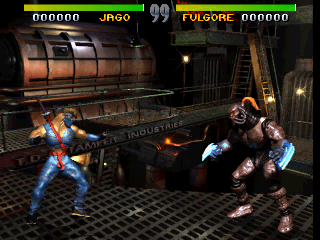
Arcade
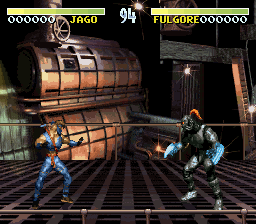
SNES
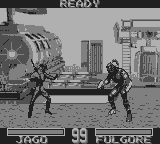
Game Boy
